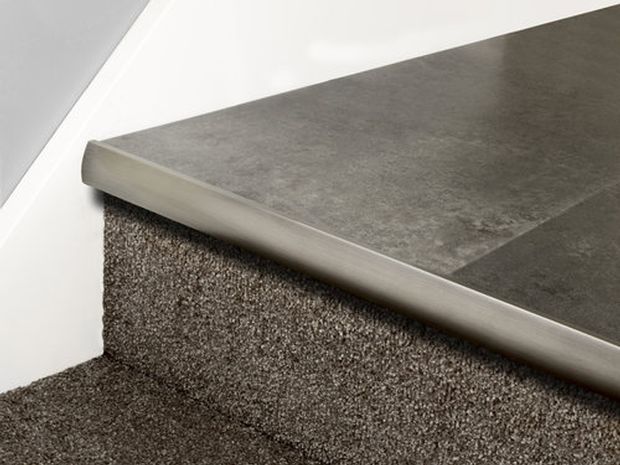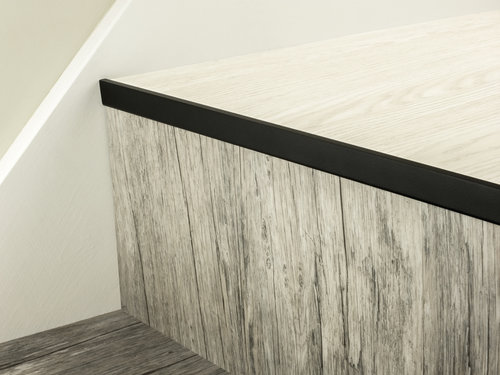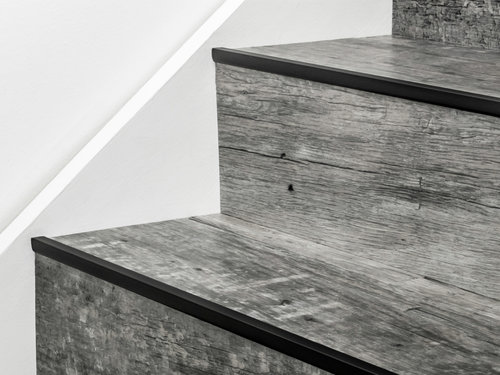The Benefits of Stair Nosing Edge Trims

Regular usage can damage both commercial and residential stairs, which can accumulate over time, causing cracks and breakages, which can require significant and expensive repairs in some cases. A solution to this is the installation of stair nosing edge trims. These are designed to protect stairs from wear and tear, and can offer a series of other benefits, like anti-slip properties or aesthetic beauty.
In this guide from Stair Rods Direct, we’ll look through the world of stair nose edge trims, the benefits they can bring to a property, and some of the products available.
What is Stair Nosing?
Stair noses are pieces of metal, wood, or other materials that are attached to the lips of each step edge within a stairwell. They have been used throughout modern history in both commercial and residential buildings, due to the wide array of benefits they can provide. While they can vary depending on design, industrial stair edgings tend to be simply attached as is, while smoother stylish noses tend to be made of two parts, a lower level which is screwed in, and an outer facing which is clipped onto that.
What is an Edge Trim?
Edge trims are used for many purposes, consisting of rubberised protected corners designed to cover up rough or dangerous edges whilst being aesthetically appealing. They are designed to protect both the edges they are covering and the people using them. For stairs, edge trims are essentially one and the same with stair nosing, offering a way to protect the edge of your stairs, and in certain cases to protect the users of the stairs from slipping.
What Stair Nosing Edge Trims Are Available?

You will have a variety of options when looking for stair edge nosing. The options that make the most sense for you will depend on what you are looking for in step edge trims. For busier commercial environments like schools, offices, and public buildings, you will probably want to opt for aluminium anti-slip stair nosing.
Using these solid options will both keep your stairs safe from wear and tear, and provide vital friction with the shoes of all users. Particularly in environments where people will be using stairs with wet shoes, the installed facing of rubber or other materials can help to ensure a solid grip on the stair. The downside of aluminium stair nosing is its relative unattractiveness. They perform a useful task but due to the necessities of their design, they may look unsuitable in residential properties and higher-end commercial buildings. Anodised Aluminium is commonly used, to give a sheen that won’t fade over time.
Traditional stair nosing can offer similar functions, avoiding wear on your stairs, but can also blend aesthetically with other elements of your property. Coming in a range of material choices like brass, nickel, and chrome, stair nosing can give a gleaming classical look to your entrance hall. If you are looking for anti-slip features, then traditional stair nosing may be unsuitable, but if you are looking for durable, stylish stair protection they are an excellent choice. Combined with traditional wooden balusters, stair nosing can bring a flair to your entrance stairwell.
What Are the Benefits of a Stair Nosing Edge Trim?

Whatever environment you are in, installing stair nosing edge trims can improve the strength of your stairs, helping to reduce the chances of wear and cracking. For commercial environments, the sturdy options can offer protection for users, helping avoid accidents within heavy traffic buildings. For residential or higher-end commercial environments, stair noses can bring a classical style to your building.
How to Fit Stair Nosing Edge Trims
Before installing stair nosing edge trims, it’s important to clean, level, and measure your stairs. Your surfaces will need to be clean, and your stair edging nosings will need to be accurately cut, otherwise the strength of your step edge nosing may be compromised.
As mentioned earlier, stair nosings come with two types of installation, standard nosing, and infill nosing. Standard nosing would be used for aluminium stair nosings, in which the fixings will be visible within a single strip. Infill nosing will be comprised of two parts, a base strip which is drilled in, and an upper facing which is attached to that. For wooden stairs, holes should be pre-drilled, holding the nosing in place to properly mark the spots for drilling. Stair nosing adhesive should also be used in conjunction with the fixings.
On our website, we have guides to installing stair nosings, and to stair nosing adhesives.
For More Information

We have a wide-ranging guide section on our website, offering practical advice and style tips. Our look at Victorian staircases looks through the key features and looks of the age. We also have more hands-on articles about hanging wallpaper above stairs, and the 7 top alternatives to carpet on stairs.
Our Range of Stair Nosing
We have a wide range of stair nosing available through our website. For traditional options look no further, with stylish ranges like the Premier Lips Stair Trims and the Stair Nose LVT Full Bull. Premier Lips Stair Trims come in a range of metal finishes, like Brass, Bronze, Chrome, and Nickel. They come in a range of sizes to suit any staircase. The Stair Nose LVT Full Bull are for use on LVT stairs, with colours like Chrome, Pewter, Nickel, and Bronze. Our full range of quality products is stylish, simple to install, and can be delivered across the UK.
Browse our range of stair nosing today.


